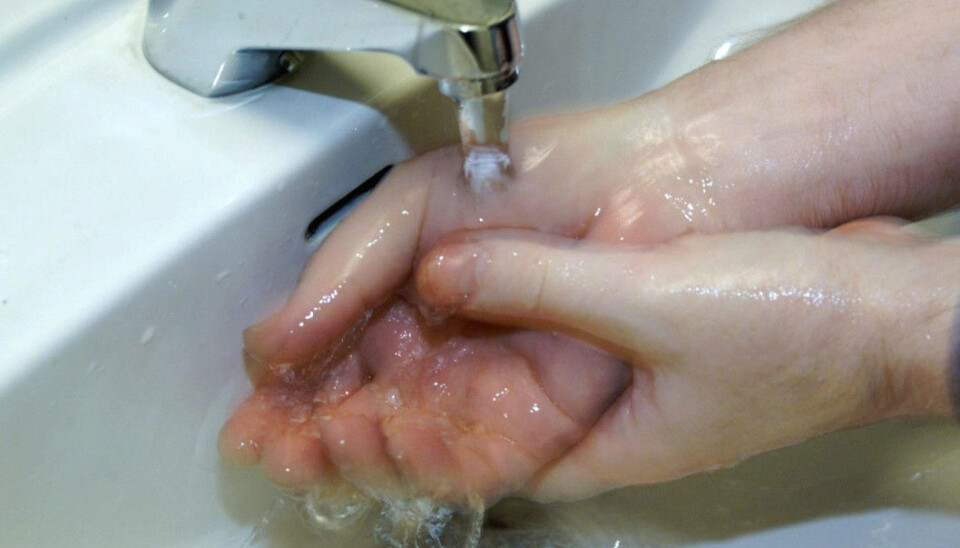
Water containing ozone disinfects hands as well as hand sanitizer
Water that contained ozone removed bacteria from hands as well as an alcohol-based disinfectant.
One of the most important ways to prevent the spread of germs is hand washing with soap or alcohol-based hand sanitizer. This is particularly important in hospitals.
But another method can be at least as good —washing your hands in regular tap water to which ozone has been added, according to an article in Dagensmedisin.no.
In a study of 30 participants, scientists compared the effectiveness of hand washing using water with added ozone to using a hand sanitizer to remove E. coli bacteria.
The study showed that ozonized tap water worked better than alcohol-based sanitizer, and was published in the Journal of Hospital Infection.
Dipped hands in bacteria
Hans Johan Breidablik, a PhD and senior advisor at Førde Hospital Trust, led the study.
After in incident in Bergen where several hundred people were infected with giardia that had gotten into the city’s drinking water source, a number of preschools and kindergartens began using ozonized tap water for hand washing to reduce the spread of illness.
But critical media coverage led officials to require the schools to discontinue this approach.
Breidablik got the idea for the study when he realized there were very few medical studies about ozone related to hand washing, even though ozone is used as a disinfectant instead of chlorine at some water treatment plants.
“I only found one study that showed ozone prevents the spread of Noro virus,” he said.
The E. coli bacteria in the study were treated so that they were not infectious. Participants dipped a hand in a soup containing more than 30,000 of the bacteria and washed their hands with one of the methods.
"After several weeks, the experiment was repeated, where each participant switched the hand and method they used, as a way to exclude individual differences," says Breidablik.
The measurements were done according to a standard procedure.
The lowest strength removed the most bacteria
The researchers tested two different concentrations of ozone in tap water for their study and were surprised to find that the lower concentration was better at removing bacteria.
Breidablik thinks this may be due to the way the researchers added ozone to the water, which resulted in higher water pressures for the lower ozone concentration.
He believes it is important to look for alternatives to disinfection methods that are in use today.
"If it’s not an antibiotic and works against bacteria, it has to be of interest in view of the increasing problems with antibiotic resistance," he told Dagens Medisin.
Easier on the hands
Another benefit of washing hands in ozonized water is that it does not cause the skin irritation and dryness that can be associated with hand sanitizer.
Breidablik said he knew of surgeons who had given up their profession because of developing eczema from hand washing, but who were able to work again when they used ozonized water for disinfection.
Breidablik is now conducting a second study to compare hand washing with ozonized water with hand washing using soap.
Ozone gas can be toxic to the body at high concentrations, but when ozone is added to water the resulting ozone concentrations in the air around the water are quite low.
The highest incidence of naturally occurring ozone is in the stratosphere, where it filters much of the ultraviolet light from the sun, which would otherwise be harmful.
Ground-level ozone can be formed when air pollution from cars, trucks, power plants, oil refineries and other sources react chemically in the presence of sunlight. This ozone can be harmful to humans and the environment.
----------































